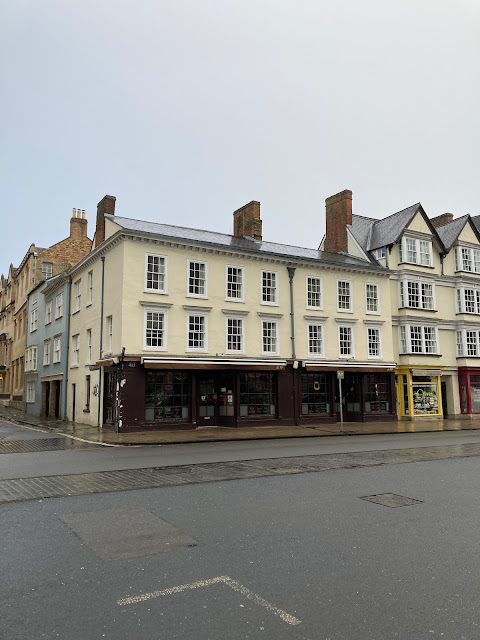A hot cup of coffee has become such a familiar part of our modern lives - it helps lift our bleary-eyed mornings, gives us an excuse for a quick, 10-minute break and gives us something to do when we meet up with friends for a good chat.
And so it's strange to think that there was once a time in Britain, before anyone drank coffee at all.
The rise in coffee houses happened in the mid-1600s. On Oxford's High Street, the present day Grand Café claims to be the oldest in England - and although it has seen other trades in its nearly 400-year history it currently functions as a coffee house. It was once called 'The Angel' and according to the diarist Anthony Wood, it was here that 'in this year [usually taken to be 1650] Jacob the Jew opened a coffee house at The Angel in the parish of S. Peter, in the East Oxon; and there it was by some, who delighted in noveltie, drank." (1)
 |
| The Grand Café, Oxford. Photo: Jo Romero |
 |
| Queen's Lane Coffee Shop, Oxford. Photo: Jo Romero |
He also mentions that chocolate was sold in the city. George I in the next century would become a huge fan of hot chocolate, which was then less creamy, more bitter and heavily flavoured with spices and cinnamon. Many considered both chocolate and coffee to be health drinks, which explains why it was sold at the apothecary. Even today there is no disputing coffee's ability to awaken and invigorate and hot chocolate's to soothe and comfort.
But it wasn't just for the warmed bowls of coffee that people flocked to these establishments. They were new and trendy, yes, but they were also a place to seek out those with similar interests, listen to the news or gossip or even just to be part of the new, upcoming, trendy crowd.
Anthony Wood who lived between 1623 and 1695, describes physicians, sons of bishops and university students meeting at the Oxford coffee houses, one of these being Christopher Wren while he was at Oxford studying Latin and Physics. Samuel Pepys, London's great diarist, also found Coffee House conversation stimulating, finding "much pleasure in it, through the diversity of company and discourse" when he first visited a coffee house in Cornhill in London in December 1660. (2)
 |
| Public Domain, Wellcome Collection |
 |
| Charles II. Not a fan of the coffee house. Photo: Public Domain, British Library Flickr. |
I suppose if a monarch wants to exert control over and demand unwavering loyalty from his subjects, he doesn't want them meeting up at the coffee house and criticising, ranting and then rising up together against his decisions with even better ideas. OK, so Coffee Houses were associated with criminals, and others up to no good too. But it's interesting that these establishments were targeted as the source for this 'scandalous' conversation and not taverns, suggesting that coffee houses in particular were places where healthy and thoughtful debate was actually welcomed. You can imagine sounding off about the king's handling of the Dutch War in a dark, timber-beamed tavern or ale house and getting narrowed eyes from the tavern keeper, being hushed with "we don't 'ave any of that talk in 'ere".
Off to the coffee house you go, then.
While only a couple of Oxford's oldest Coffee Houses survive today, there would have been a number of them here in the mid-seventeenth century, and what more would we expect from a vibrant and diverse city that attracted students, scholars and intellectuals through its various colleges? Scientists, writers, artists and politicians came together to sip coffee and hot chocolate. The community that sprung up - and the business owners that ran the houses - brought their own ideas and aspects of their own cultures to add to the mix. These establishments offered a melting pot of independent thinking, debate and inspiration - which, as we've seen, might have been seen as a threat to those in charge...
You can visit both Queen's Lane Coffee House (no.40) and Grand Café (no.84) on Oxford's High Street, almost opposite from one another. Check with the coffee houses to make sure they're open before setting off for your visit.
You might also like: Health Tips from the 1600s, 7 Reasons You Don't Really Wish There Was a Time Machine and Sex and Sexuality in Stuart Britain - A Review.
Notes:
1. The Life and Times of Anthony Wood, Antiquary. Published 1891. Public Domain. archive.org - accessed 19 January 2022.
2. Samuel Pepys Diary, accessed 19 January 2022.
3. London Coffee Houses and Mathematics, St Andrews, CC4.0. accessed 19 January 2022.

















0 Comments